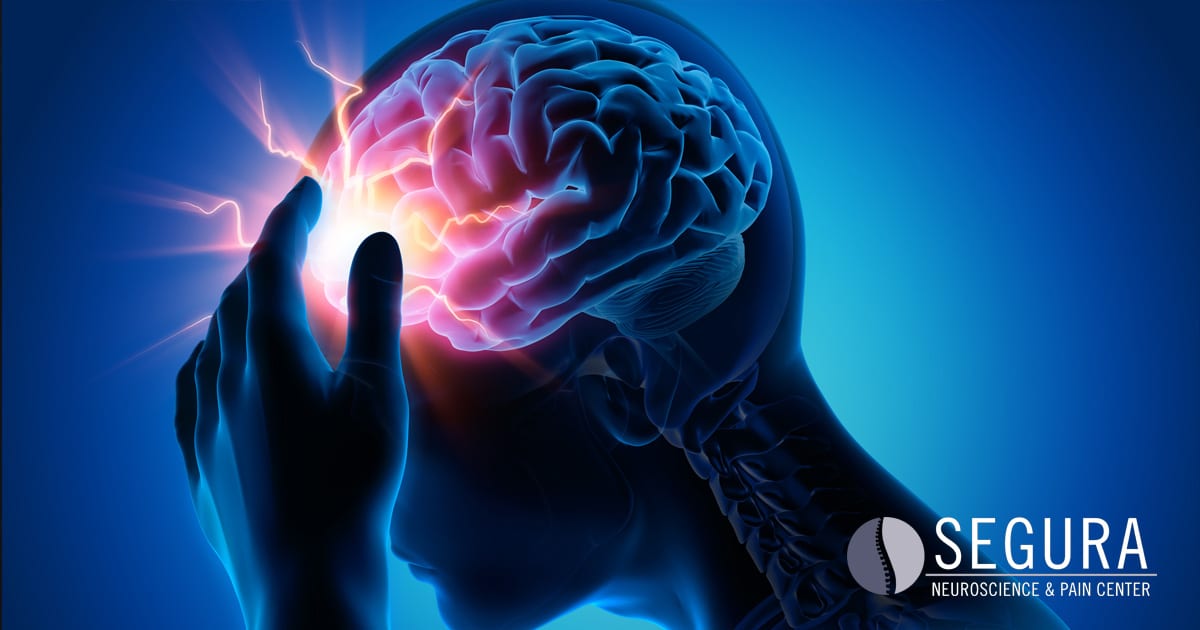Migraine headaches affect more than 36 million Americans, according to estimates by the American Migraine Foundation. These powerful, throbbing headaches usually occur on one side of the head and can last from four hours to three days or more. They may happen rarely or several times a month. Migraines are often accompanied by other symptoms, including nausea and vomiting or sensitivity to light or sounds.

Stages of a Migraine
Prodrome
Subtle changes 24-48 hours ahead of time may warn of approaching migraine headaches. These can include mood changes, food cravings, increased thirst and urination and neck stiffness.
Aura
About 25 percent of migraine headaches have an aura 20 minutes to an hour before an attack. Auras usually affect vision, with sufferers seeing dots, lines or flashing. But they can include other symptoms, such as numbness in the face or body, slurred speech, uncontrollable jerking or hearing problems.
Attack
Pain will occur, usually on one side of the head, but sometimes on both, and can be accompanied by other symptoms.
Post-drome
Feelings of confusion and fatigue may last up to a day after an attack. Certain movements may trigger the pain to return briefly.
Types of Migraine Headaches
There are many different types of headaches, so pinpointing them with a headache specialist can take time. Migraine headaches are typically triggered by things like foods, smells, lights and sounds, or a sudden change in the environment. What happens next determines the type of headache, and the most effective treatment plan.
Complicated Migraine
A complicated migraine is accompanied by an aura, which signals that severe pain is coming.
Common Migraine
The common migraine does not have the warning mechanisms of prodrome and aura. It can be difficult to diagnose because its symptoms are similar to other types of migraine.
Silent Migraine
This type of migraine, also known as acephalgic migraine, includes the aura phase and other symptoms of migraine without the head pain. Sufferers are likely to have other types of migraines as well.
Hemiplegic Migraine
This migraine resembles a stroke with weakness or numbness one one side of the body. Like the silent migraine, it does not always include head pain.
Retinal Migraine
Temporary vision loss is the primary sign of this migraine, most common among younger women. Blindness is usually reversible, but can last anywhere from a minute to months. Those who experience a retinal migraine should see a specialist as soon as possible.
Chronic Migraine
If a headache occurs more than 15 days a month, it can be chronic migraine. The severity of symptoms and pain may vary from attack to attack.
Ice Pick Headache
These are sudden with intense pain that feels, as the name implies, like you are being stabbed with an ice pick. They are short, usually lasting 30 seconds or less, but extremely painful.
Cluster Headache
This is one of the most painful types of headache. Symptoms include burning pain around the eyes, temples and sometimes the back of the head. It can be accompanied by other symptoms such as red, puffy eyes or a runny nose.
Cervicogenic Headache
This headache is actually caused by pain from the neck or spine and often requires physical therapy in addition to other treatments.
When to See a Pain Management Specialist
Our interventional pain specialists can diagnose rare headache disorders and break the cycle of long-lasting or acute migraine headaches. They also are up-to-date on the full spectrum of headache medicines and the most effective treatments, including Botox Injections, SPG injections (sphenopalatine ganglion blocks), RFA of the occipital nerve, and spinal cord stimulator.
